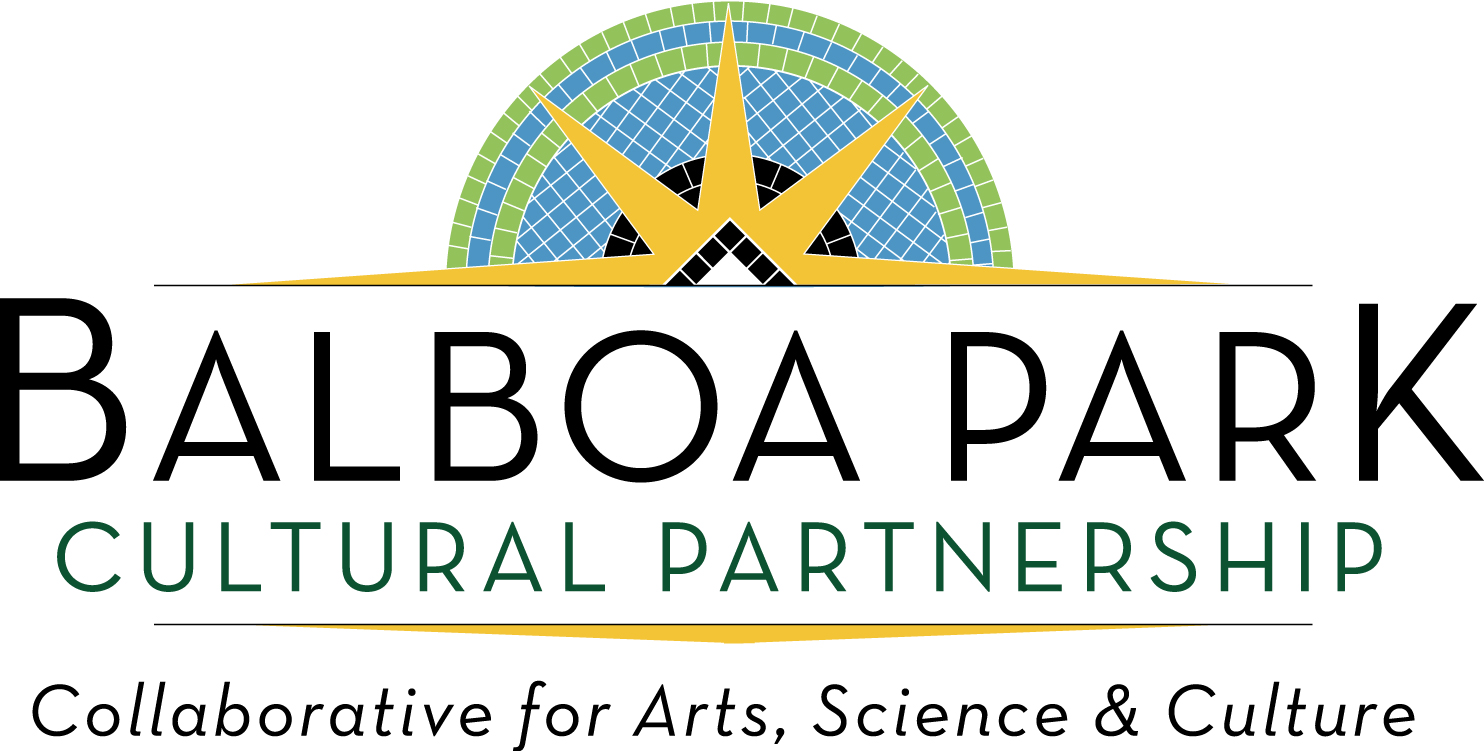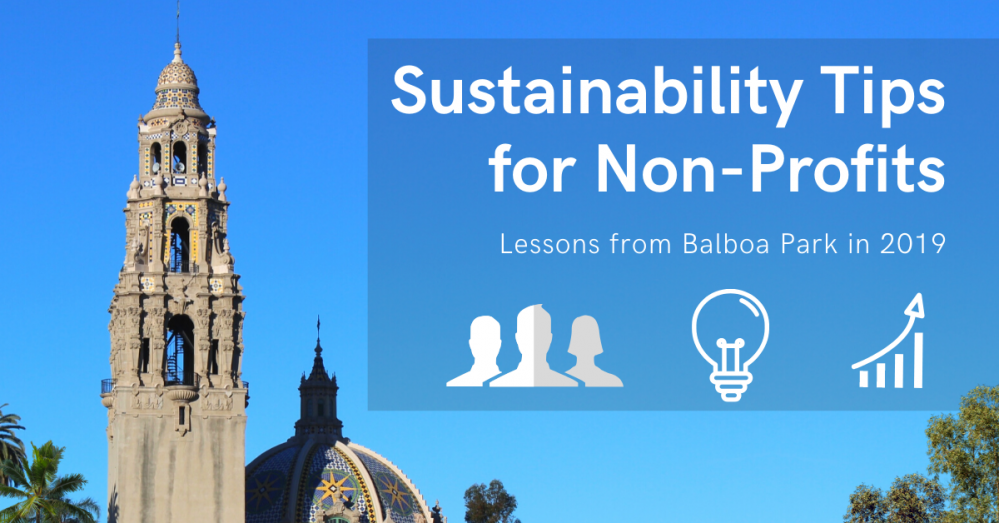Non-profits have an important role to play in reducing global emissions, but it can be difficult to reduce your environmental impact if you have limited resources. Based on efforts in Balboa Park from the past year, below are some tips for non-profits and businesses with limited budgets that are looking to use less energy and find new ways to be more sustainable.
Build networks to share best practices
It can be difficult to know where to find ways to reduce your environmental impact, especially when your organization has limited resources. By joining networks that are focused on sustainability, your non-profit can work with other organizations and businesses to learn how to improve operations. With collective experience and insight, it’s much easier to define “best practices” that can have significant impacts on reducing your environmental footprint.
In Balboa Park, there are two networks organized by the Sustainability Program that provide a space for Park employees and volunteers to share best practices: the Balboa Park Green Team and the Facility Directors group. The Green Team is comprised of frontline to mid-level staff who are the “boots on the ground” and influence daily operations; the Facility Directors Group members play an important role in influencing decisions that affect budgets and planning for sustainability initiatives. During both network meetings, members share the creative ways that their organization has reduced energy usage and how they overcame the barriers to implementing these initiatives. Because Green Team and Facility Director Members often have similar barriers to implementing energy-saving initiatives, the best practices they learn are relevant to their organization’s goals.
Anna Sharp, Conservatory Program Assistant at the San Diego Youth Symphony and Conservatory, told us how being part of the Green Team benefited her organization in 2019:
“The Green Team has helped SDYS really take a look at how we are managing our trash/recycling, how we are using our lights, and how we can encourage our students to become more environmentally conscious.
Our reach is huge – we have over 700 students in our ensembles who come here every weekend from September to June, so we are capable of having a positive impact. Thanks to the help of the Sustainability Program and the Green Team, we have been able to connect with TerraCycle, where we recycle used instrument strings. We are currently on the waitlist for the snack bag recycling program and hope to get access very soon. Occasionally, we will receive donated instruments and loan them out to students who need them. We also encourage carpooling, reusable utensils, and reusable water bottles to our students and their families for the weekends through our mass Weekly Update emails.
In our office, we have taken a look at our own trash. We have been much better since the Sustainability Program visited us – we have implemented plastic film recycling and monitoring our curbside recycling. Additionally, our lights are all automatic and turn off when people have left the building and will be replaced with more efficient lights once they burn out.”
Pursue certification for sustainability efforts
Certification systems like LEED, or Leadership in Energy and Environmental Design, can provide guidance and structure for organizations that want to reduce their energy usage and environmental impact. In addition, certifications can bring recognition to non-profits for their environmental initiatives, which can bring attention and support from potential donors.
In 2019, Balboa Park staff submitted for LEED recertification of four buildings to review and verify on-going environmental performance. This year’s efforts will maintain a legacy of 10 LEED buildings in the Park. These certifications demonstrate the sustainability initiatives taking place in Balboa Park and set forth a path of innovative environmental practices for the Park’s future.
Use free resources made available by energy utilities
While upgrading to energy-efficient equipment is a great way to reduce energy use, it can often be costly. Local energy utilities, like San Diego Gas and Electric (SDG&E), offer free resources that can reduce this cost of energy saving upgrades. These resources range from rebates for purchases of new efficient equipment, audits to identify ways that energy is being wasted, and incentives for businesses that can save energy on high-demand days. Throughout 2019, Balboa Park organizations used a variety of resources to find low-cost ways to lower energy usage while considering their historic building’s unique needs and limitations.
Patrick Heffernan from the San Diego Automotive Museum reiterated the importance of these resources from SDG&E. When asked to share advice about energy efficiency for non-profits, Patrick said, “I’d suggest that anyone wishing to be more efficient with their energy or who wish to cut energy costs should contact SDG&E for their advice and for their rebate and incentive packages.”
Throughout 2019, organizations in Balboa Park, including the San Diego Art Institute and the WorldBeat Cultural Center, enrolled in SDG&E’s Business Energy Solutions program to find ways to lower their energy costs and increase their energy efficiency.
Look for energy strategies that have little or no cost
Some of the best energy-saving strategies require no capital investment. “Low-cost/no-cost” measures are focused on improving a building’s energy efficiency by maintaining the existing building, such as encouraging better occupant behaviors or performing maintenance on existing equipment.
During 2019, organizations in Balboa Park used low-cost/ no-cost measures to find accessible ways to reduce their energy use. The organizations in Casa del Prado saved an estimated 5,473 kWh through their “Switch Off” campaign, which focused on encouraging occupants to practice energy saving habits. All of these habits had no upfront cost, like closing doors to keep conditioned air inside and turning off thermostats, lights, and electronics when a room is not in use.
Many of these low-cost/no-cost methods are easily accessible to non-profits. The EPA’s Energy Star website has several ways to reduce your energy usage that require little or no upfront cost.
Why It’s Important
While finding ways to reduce our environmental footprint, it’s important to remember the impact of such an effort. Michael Field, Director of Experience Design at the Natural History Museum, shared with us what he tells his stakeholders when emphasizing the importance of sustainability in non-profits:
Have you seen those climate change graphs with two different scenarios for rising temperatures? The red line shows a steep increase in temperature with business as usual. The blue line shows a more gradual rise and eventual plateau scenario when we rapidly reduce our carbon emissions. We have to be that blue line. I believe that meaningful change always comes from the bottom up starting with individuals that eventually form small groups and those groups continue to expand and connect on an exponential scale. Balboa Park Sustainability Program is the group connecting all of us together with our policy makers, energy providers and the tools we need to make a rapid transformation. All of us working together are that blue line.

For non-profits and businesses, a commitment to sustainability is a commitment to improving quality of life in the community, mitigating their environmental impact, and investing towards the long-term prosperity of their organizations.

